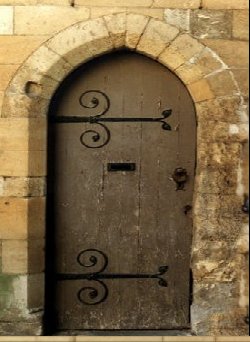|
Hidden History in Salt Rock
Hidden history in Salt Rock
MISSY OLDAKER
Staff writer
SALT ROCK -- The Native Americans that once roamed West Virginia left
much more than arrowheads and artifacts, this is evident through the Salt
Rock Petroglyphs.
A petroglyph is defined as an image that is created through removing part of
a rock surface by incising, pecking, carving or abrading. A magnificent
example of West Virginian petroglyphs can be found just a short distance out
a gravel road and over an embankment in Salt Rock.
Darla Spencer, Secretary Treasurer of the West Virginia Archaeological
Society and a member of the Council for West Virginia Archaeology Society,
said the first written observation of these petroglyphs was in a book,
Ancient Monuments of the Mississippi Valley, written by Squier and Davis in
1848.
"In this book they had descriptions and drawings of the rocks," Spencer
said. "Actually they mentioned a third rock that no one has been able to
find, so we don't know if that rock has been buried over time or what."
The known Salt Rock Petroglyphs include two stones. Among the images carved
into these stones are a full length human figure with a weeping eye mask, an
outline of a bird and an unusual carving that appears to be part deer and
part serpent.
Spencer said the petroglyphs have been associated with Fort Ancient Culture.
"Fort Ancient is just a general term that defines villages that were
occupied here between 1000 A.D. and 1700 A.D.," Spencer said.
"The Salt Rock Petroglyphs are some of the only ones that have the symbol of
what looks to be a full length human figure with a weeping eye mask," she
said. "The weeping eye mask, which are shell masks, were made in the 1500s
and 1600s."
There is also a village that was excavated near the Salt Rock Petroglyphs at
Gue Farm.
"A rather large weeping eye mask was also found there," Spencer said. "So
they can pretty much link the rocks to that village."
Spencer said there are petroglyphs all over the state, some of which have
never been photographed.
"This is probably one of the best examples of a petroglyph," Spencer said.
"It is just really beautiful."
Spencer added that although petroglyphs hold much beauty and history, they
are in danger.
"The problem with these petroglyphs is that they are usually carved in
sandstone and over time the elements have just worn the stone away so you
can barely see the carvings," Spencer said.
The West Virginia Archaeological Society has been trying to get a group of
people together and erect a shelter over the Salt Rock Petroglyphs, because
they are so unique and detailed.
"Up until a year or two ago the petroglyphs in Salt Rock hadn't been
defaced; now someone has carved another little stick figure on it," she
said. "That is really unfortunate because it has been here for at least 400
years."
Defacement of the stones is one problem, but still the biggest problem is
time.
"Unless someone does something, these stones are just going to erode to the
point that you won't be able to see any of the drawings," Spencer said.

|

